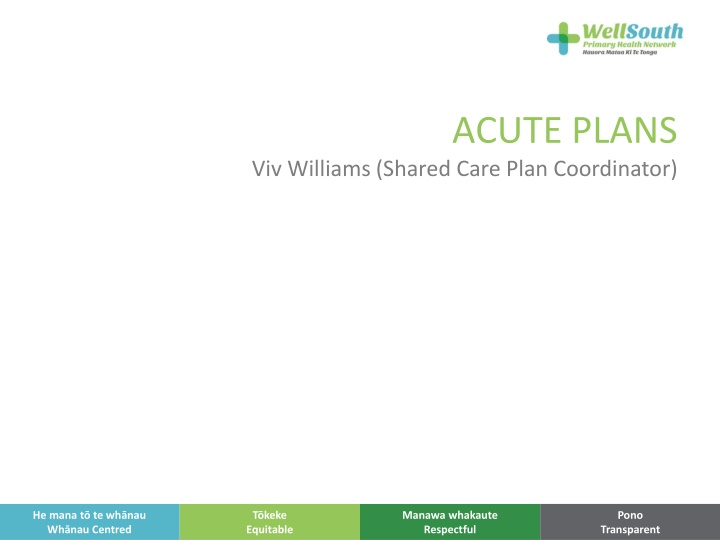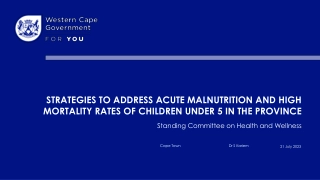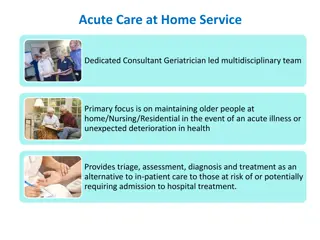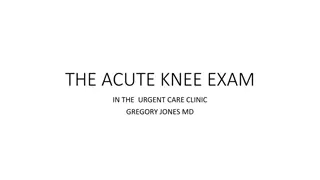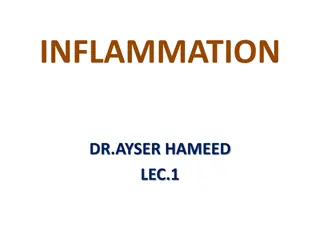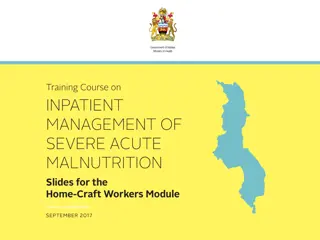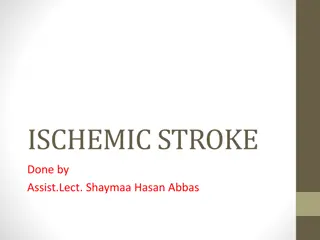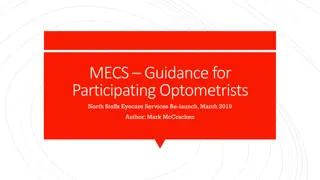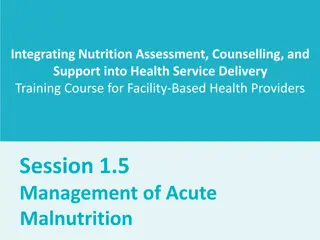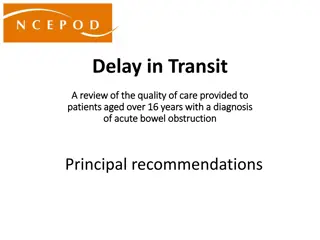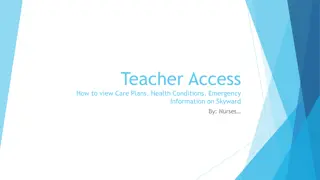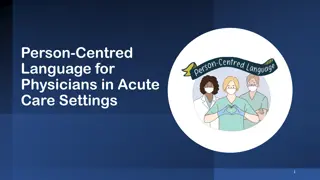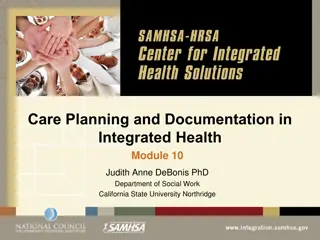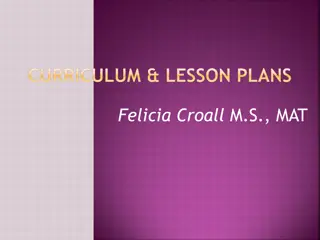Comprehensive Guide to Creating and Understanding Acute Care Plans
This comprehensive guide provides detailed information on creating and understanding acute care plans, including the purpose of an acute plan, who needs one, what information can be written in an acute plan, examples of baseline clinical parameters, alerts to more detailed plans, and insights into complex social and medical situations. The content emphasizes a patient-centered approach and highlights the importance of transparency, equity, respect, and cultural sensitivity in acute care planning.
Download Presentation

Please find below an Image/Link to download the presentation.
The content on the website is provided AS IS for your information and personal use only. It may not be sold, licensed, or shared on other websites without obtaining consent from the author.If you encounter any issues during the download, it is possible that the publisher has removed the file from their server.
You are allowed to download the files provided on this website for personal or commercial use, subject to the condition that they are used lawfully. All files are the property of their respective owners.
The content on the website is provided AS IS for your information and personal use only. It may not be sold, licensed, or shared on other websites without obtaining consent from the author.
E N D
Presentation Transcript
ACUTE PLANS Viv Williams (Shared Care Plan Coordinator) He mana t te wh nau Wh nau Centred T keke Equitable Manawa whakaute Respectful Pono Transparent
PURPOSE OF AN ACUTE PLAN To share information about a patient which improves saftey and effectiveness of care in an acute event for the patient He mana t te wh nau Wh nau Centred T keke Equitable Manawa whakaute Respectful Pono Transparent
WHO NEEDS ONE Anyone who is likely to present acutely to a service who do not know the patient. He mana t te wh nau Wh nau Centred T keke Equitable Manawa whakaute Respectful Pono Transparent
WHAT INFORMATION CAN BE WRITTEN IN AN ACUTE PLAN To address behaviour or certain presentations Examples: Mrs G has cluster headaches - is not a drug seeker, please administer oxygen and appropriate pain relief. Sophie is under the care of a psychologist for her self harm behaviour. Please help her with dressing with dressing or suturing her lacerations calmly and ring her support person, Mary (ph 027 664 5839) and do not engage further re behaviour. He mana t te wh nau Wh nau Centred T keke Equitable Manawa whakaute Respectful Pono Transparent
What information can be written on an Acute Plan To give a baseline of normal clinical parameters: Examples: Mrs J is normally independent, lives alone, mildly cognitively impaired, not breathless when talking but breathless on mobilisation. O2 sats 88% when well. BP 145/80, wt74kg. Pt plan: has a back pocket script for prednisone and AB's if SOB worsens or has coloured phlegm. He mana t te wh nau Wh nau Centred T keke Equitable Manawa whakaute Respectful Pono Transparent
WHAT INFORMATION CAN BE WRITTEN ON AN ACUTE PLAN An alert to a more detailed plan Examples: This patient has a mental health crisis plan, please break the mental health privacy seal if seen acutely Example: This patient does not want active resuscitation, please see Advance Care Plan He mana t te wh nau Wh nau Centred T keke Equitable Manawa whakaute Respectful Pono Transparent
What information can be written on an Acute Plan An alert to more complex , detailed picture of social complexities, comorbidities and multiple teams involved in care . Example This patient has a history of domestic violence, currently living elderly relatives. Non compliant with medication for rheumatoid arthritis, heart disease and type two diabetes. Frequently presents to ED with chest pain. Often agitated and verbally aggressive. Security to treat this patient is strongly advised. He mana t te wh nau Wh nau Centred T keke Equitable Manawa whakaute Respectful Pono Transparent
TIPS AND TRICKS Acute plans can be written collaboratively between different teams and medical and nursing staff. DON'TS Don't Include a medication list. Just medications used for the most frequently presenting condition. Other meds can be found on Health One. Don't include time lines eg appointments next week. AP should be written so they can remain current for several months. Don't write too much , keep information succinct and relevant. Remember the triage nurse , ambulance officer or acute doctor reading this is dealing with a sick patient in an emergency setting. . He mana t te wh nau Wh nau Centred T keke Equitable Manawa whakaute Respectful Pono Transparent
TIPS AND TRICKS DO'S Keep the information simple and concise Delete information from the acute plan that is out of date on no longer applicable/accurate (this is captured in the history) Save the plan when completed (the new date is added automatically) Reference longer documents as required and give instructions as to where to find it. Eg the Advance Care Plan, mental health plans, pain plans, personalised care plans Do the plan, if possible, with the patient, Attach a copy of the AP to the discharge letter if the patient is being discharged to an other facility. Eg ARC facility He mana t te wh nau Wh nau Centred T keke Equitable Manawa whakaute Respectful Pono Transparent
He mana t te whnau Wh nau Centred T keke Equitable Manawa whakaute Respectful Pono Transparent
He mana t te whnau Wh nau Centred T keke Equitable Manawa whakaute Respectful Pono Transparent
He mana t te whnau Wh nau Centred T keke Equitable Manawa whakaute Respectful Pono Transparent
Patient consent options He mana t te wh nau Wh nau Centred T keke Equitable Manawa whakaute Respectful Pono Transparent
Alert Options He mana t te wh nau Wh nau Centred T keke Equitable Manawa whakaute Respectful Pono Transparent
He mana t te whnau Wh nau Centred T keke Equitable Manawa whakaute Respectful Pono Transparent
He mana t te whnau Wh nau Centred T keke Equitable Manawa whakaute Respectful Pono Transparent
RESOURCES FOR CARE PLAN DISCUSSION Te Whatu Ora (Health New Zealand) south island alliance COVID 19 update (captures key medical information and patient preferences) Health Quality and safety commission guide Aotearoa Serious illness conversation guide Patient COVID 19 serious illness conversation guide Shared goals of care He mana t te wh nau Wh nau Centred T keke Equitable Manawa whakaute Respectful Pono Transparent
